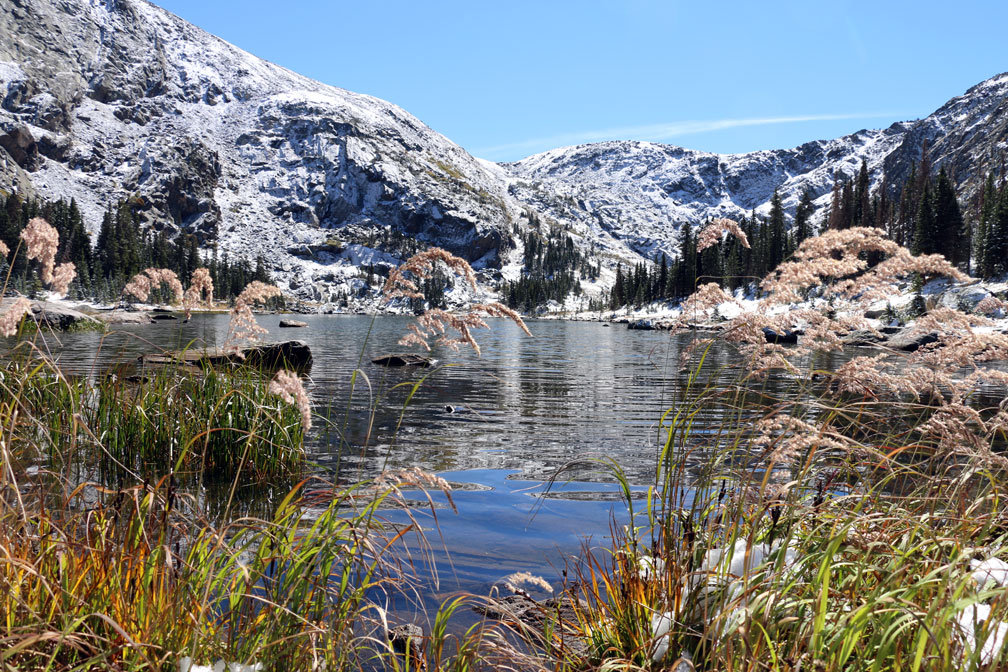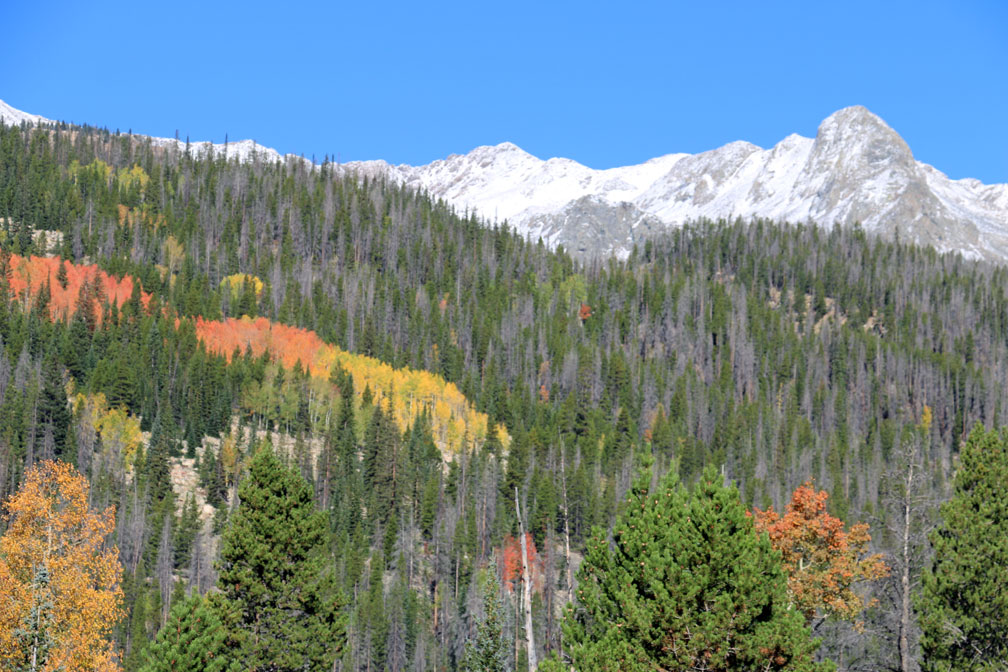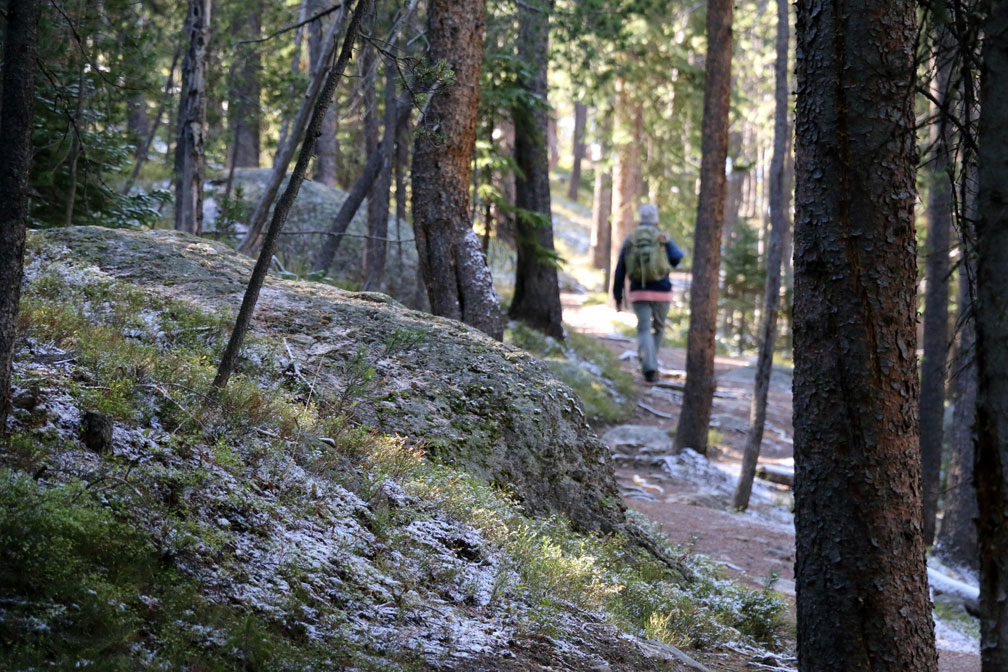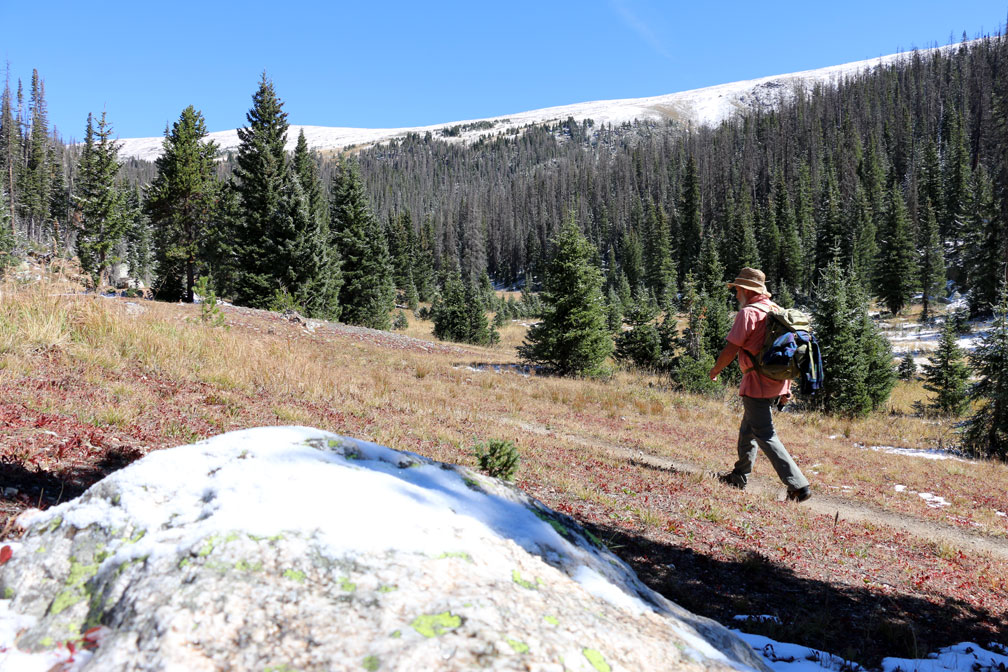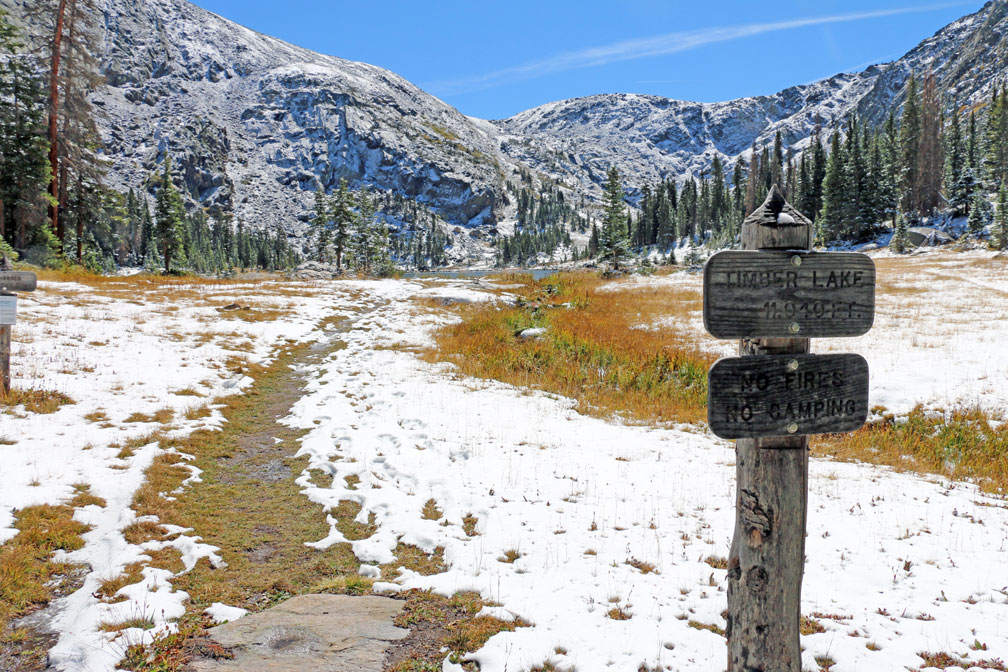|
story by Dave Rusk photos by Murray Selleck “What do ya think?” We stood before some fallen logs strewn across the trail that required climbing over in order to go forward. “I don't see why not.” The sign had warned us that two miles into our 5.3-mile hike to Timber Lake on the west side of Rocky Mountain National Park, there would be an active landslide with possible moving soil and falling trees. Now, here we were at that point. “I don't know. When I was here before, they had diverted the trail up and around.” That had been seven years ago and I was surprised that this was still an ongoing thing. But the sign did say to proceed, “at your own risk.” “Well, let's go see what it's like. Probably not that bad.” We stepped carefully onto the fallen logs. They were covered with a bit of snow that was melting and making them slippery. But we moved forward to where we could get a better look. A gouge down the hillside of mud and fallen trees appeared before us. The Park had cut a few trees and we followed a makeshift path that dropped steeply down into the ravine. The path slid narrowly between some cut logs going one way and a fallen tree going the other. Then we ducked under that tree. There was a rivulet of water flowing down the ravine and I imagined during spring melt, this hillside might become very fluid and unstable. But right now, at the end of the season, the mud slide seemed dry and solid. So, a short scamper up out of the ravine and that was it. “Well that wasn't much of a problem.” “Yeah, it was a lot shorter than I thought it would be.” I had met my friend, Murray, in Grand Lake the evening before, our hike having been delayed a day due to a first-of-the-season snowfall that had temporarily closed Trail Ridge Road. Weather can always be a factor, making planning for an autumn hike difficult, although it ended up being a beautiful early fall day. While a number of trails on the west side of Rocky have been damaged by the massive Troublesome Creek fire the previous October, with some trails still closed, the fire did not reach the Timber Lake trail, which starts out at the base to Trail Ridge Road across from the Colorado River Trailhead. We had stayed the night before at a friend's cabin in Grand Lake, grabbing some take out at White Buffalo Pizza. There was a pretty good frost the next morning on the windshield, so we didn't rush out the door. By the time we got to the trailhead, at about 9,000 feet, the sun was warming the frosty grass in the meadows. We hopped out the truck and took a look around. Golden aspens accented a Colorado blue sky with a decent dusting of snow gracing the peaks across the valley. Despite the unexpected one day delay, it looked like we were going to have a gorgeous hike and we were excited to hit the trail. As we started our frosty hike, we wondered how deep the snow might get as we gained elevation with Timber Lake resting at 11,000 feet. The trail starts off easy enough, traversing around the lower west side of Jackstraw Mountain, crossing over Phantom and Beaver Creek, and then begins a steady climb going around the south side of Jackstraw and into the Timber Creek drainage. But while some sections of the 2,000-foot elevation gain got me huffing, the trail is mixed with more gradual stretches too. Once past the brief but tricky landslide area, the trail continues its steady but gradual rise through subalpine forest, eventually bumping into Timber Creek. At one point, an open meadow comes into view and I am reminded of spending time here one early August photographing and tip-toeing around a large patch of Elephant's Head wildflowers. It was a beautiful patch. But the meadow was mostly dry and dormant now, waiting for a return to winters nourishment. The trail follows Timber Creek closer here before breaking into a clearing at just under 11,000 feet, with good vistas of the Continental Divide to the north, where a trail to Mount Ida travels above tree line. At this point, it seems like you must be very close to Timber Lake, and you are except that the trail takes an unexpected turn to the east through more forested terrain, rising to just over 11,000ft before finally coming onto the lake right at tree line. There was maybe an inch or two of snow around the lake and the dusting on surrounding ridges looked splendid. I've been here as early as mid-June when the lake was still thawing out from the deep winter snow. I've also been here in mid-summer with terrific wildflowers surrounding the lake. And now the end of September with first snow. They've all been great hikes. We find ourselves a sunny lakeside rock and pull out our snacks, taking in the views and the sunshine. There are smaller ponds farther on nearby that can be explored and some folks like to climb up the ridge at the far end of the lake to ascend Mount Ida. On this day though, we just take it easy and enjoy the peaceful solitude of this end of summer beauty before our return. 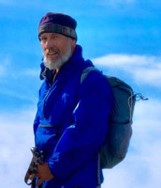 Dave Rusk has been sauntering and taking photographs through Rocky Mountain National Park for decades. He is the author publisher of Rocky Mountain Day Hikes, a book of 24 hikes in Rocky, and the website of the same name. He is the publisher of HIKE ROCKY Magazine and an important content contributor to all of these endeavors.
0 Comments
Leave a Reply. |
Categories
All
|
© Copyright 2025 Barefoot Publications, All Rights Reserved

